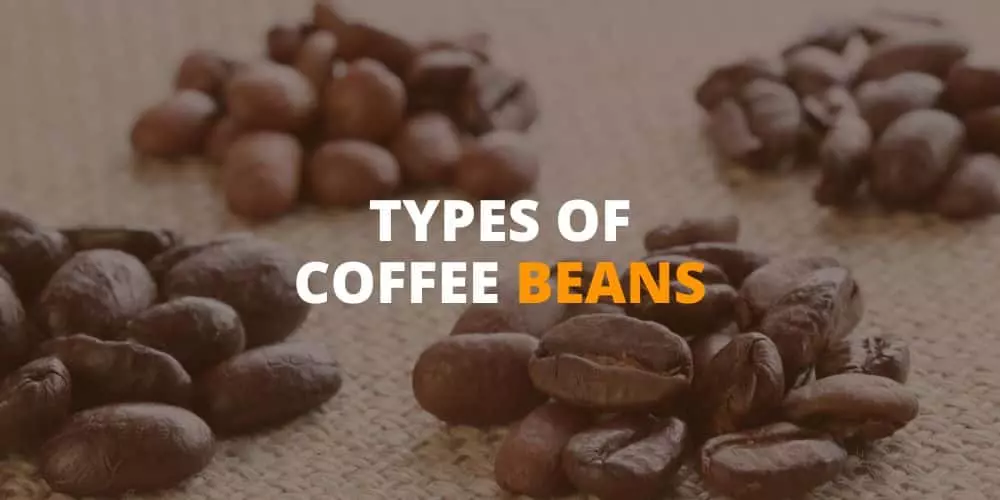Coffee lovers around the world can attest to the allure of a steaming cup of Colombian coffee. For decades, Colombian coffee has been one of the most popular and beloved coffees on the market, known for its rich, smooth flavor and enticing aroma.
But what is it that makes Colombian coffee so special? What are the unique characteristics that set it apart from other coffee varieties? And why has it become such a fixture in the global coffee industry?
In this guide to Colombian coffee, we’ll explore the rich history, distinct regions, and unique production methods that have contributed to the success of Colombian coffee. From the singel origins of coffee in Colombia to the current state of the industry, we’ll take a deep dive into one of the world’s most beloved coffees and discover what makes it so special.
Whether you’re a seasoned coffee connoisseur or just starting to explore the world of coffee, this guide will provide valuable insights into the rich and complex world of Colombian coffee. So grab a fresh cup of coffee, sit back, and prepare to learn all about one of the world’s most beloved brews.
History of Colombian Coffee
Coffee has been an integral part of Colombian culture for centuries, with the first coffee plants arriving in the country in the early 18th century. However, it wasn’t until the mid-19th century that the coffee industry began to take off, with the development of large-scale coffee plantations and the implementation of new farming techniques.
As the coffee industry grew, it became an important source of income for Colombia and played a key role in the country’s economic development. By the early 20th century, coffee had become Colombia’s primary export, and it remains a vital part of the country’s economy to this day.
Colombian coffee’s popularity on the global market can be attributed to a number of factors, including its unique flavor profile, high quality, and consistent production methods. Additionally, the Colombian Coffee Growers Federation (FNC) has played an important role in promoting Colombian coffee and ensuring its quality and consistency.
One of the most significant events in Colombian coffee history was the creation of the Juan Valdez character in the 1950s. Juan Valdez, a fictional coffee farmer, was created by the FNC as a way to promote Colombian coffee and differentiate it from other coffee varieties on the market. The character quickly became a symbol of Colombian coffee and helped to cement its reputation as a high-quality, premium coffee.
Today, Colombian coffee is enjoyed by coffee lovers around the world and continues to be an important part of the global coffee industry. The rich history and tradition of Colombian coffee make it a unique and beloved variety, and its popularity shows no signs of slowing down anytime soon.
Colombian Coffee Regions
Colombia’s diverse landscape and varying climates have led to the development of distinct coffee-growing regions, each with its own unique flavor profile and characteristics. Here are some of the most important Colombian coffee regions:
- Huila: Located in the southwestern part of Colombia, the Huila region produces coffee with a medium body and bright acidity. The coffee is often described as having notes of chocolate, caramel, and citrus.
- Antioquia: The Antioquia region, located in the central part of Colombia, produces coffee with a full body and a sweet, nutty flavor. The coffee is often described as having notes of chocolate, caramel, and nuts.
- Tolima: The Tolima region, located in the central-western part of Colombia, produces coffee with a medium body and a bright, fruity acidity. The coffee is often described as having notes of berries, citrus, and floral undertones.
- Nariño: The Nariño region, located in the southwestern part of Colombia, produces coffee with a full body and a sweet, fruity acidity. The coffee is often described as having notes of chocolate, berries, and tropical fruit.
- Cauca: The Cauca region, located in the southwestern part of Colombia, produces coffee with a medium body and a bright, citrus acidity. The coffee is often described as having notes of chocolate, caramel, and citrus.
Each region has its own unique microclimate and soil composition, which affects the flavor and characteristics of the coffee beans. Colombian coffee growers take great care to ensure that the coffee beans are grown and harvested under the ideal conditions for their specific region, resulting in the distinct and delicious flavors that Colombian coffee is known for.
Whether you prefer a bright, citrusy coffee or a full-bodied, nutty brew, there’s a Colombian coffee region that’s sure to please your palate. So next time you’re enjoying a cup of Colombian coffee, take a moment to appreciate the unique characteristics that make it one of the most beloved coffees in the world.
Coffee Varieties in Colombia
Colombia is known for its high-quality coffee, and much of this is due to the country’s diverse selection of coffee varieties. Here are some of the most common coffee varieties grown in Colombia:
- Castillo: The Castillo variety was developed in Colombia in the 2000s as a hybrid of the Caturra and Timor varieties. It was created to be resistant to the coffee leaf rust disease, which had been devastating Colombian coffee crops. Castillo coffee is known for its high yield and its mild, smooth flavor.
- Caturra: The Caturra variety is a mutation of the Bourbon variety, which originated in Ethiopia. Caturra coffee is known for its bright acidity and sweet, fruity flavor. It is often used in blends to add complexity and balance.
- Bourbon: The Bourbon variety originated in Ethiopia and is known for its sweet, complex flavor profile. It has a low yield but is highly prized by coffee connoisseurs for its unique taste.
- Typica: The Typica variety is one of the oldest known coffee varieties and is thought to have originated in Yemen. It is known for its mild, smooth flavor and is often used as a base in coffee blends.
- Tabi: The Tabi variety was developed in Colombia as a hybrid of the Typica, Bourbon, and Timor varieties. It is known for its high yield and its bright, fruity flavor.
Each coffee variety has its own unique flavor profile, and Colombian coffee growers carefully select the variety that will thrive best in their specific region’s climate and soil. This attention to detail results in the diverse and delicious flavors that Colombian coffee is known for.
Next time you’re enjoying a cup of Colombian coffee, take a moment to appreciate the unique characteristics of the coffee variety that you’re drinking. Whether it’s the bright acidity of the Caturra or the smooth, complex flavor of the Bourbon, each variety adds its own special touch to this beloved beverage.
Colombian Coffee Production
Colombia is one of the world’s largest coffee producers, with a long history of coffee cultivation and export. Coffee production is an important part of the country’s economy, providing jobs and income for millions of Colombians.
Most Colombian coffee is grown on small family farms, with an average farm size of just a few acres. These farms are often located in remote, mountainous regions, where the cool temperatures and high altitude provide the ideal growing conditions for coffee plants.
Harvesting typically takes place between October and January, with the coffee cherries being picked by hand. This labor-intensive process ensures that only the ripest cherries are selected, which results in higher quality coffee.
Once the coffee cherries have been harvested, they are sorted and processed. The two most common processing methods in Colombia are the washed method and the natural method. Washed coffee is processed by removing the outer layers of the coffee cherry before drying the beans. This results in a cleaner, brighter flavor profile. Natural coffee, on the other hand, is dried with the outer layers of the cherry still intact, which imparts a fruity, wine-like flavor to the beans.
After processing, the coffee beans are typically sold to cooperatives or exporters, who grade and classify the beans based on quality. The highest quality beans are sold at a premium, often to specialty coffee roasters and cafes around the world.
Despite the challenges posed by climate change and economic pressures, Colombian coffee production continues to thrive. The country’s rich coffee culture and commitment to sustainable farming practices ensure that Colombian coffee will remain a beloved and important part of the global coffee industry for years to come.
Colombian Coffee Culture
Coffee is deeply ingrained in Colombian culture, and the country has a rich surprising history of coffee production and consumption. Coffee is not just a drink in Colombia, but a way of life, with many traditions and customs surrounding its preparation and consumption.
One of the most iconic aspects of Colombian coffee culture is the “Tinto,” a small cup of strong, black coffee that is ubiquitous throughout the country. Tintos is often served in small plastic cups by street vendors, and are a popular pick-me-up for Colombians on the go.
Another important aspect of Colombian coffee culture is the “cafeteria” lifestyle. This refers to the traditional way of life for coffee farmers in Colombia, which is centered around coffee production and the rhythms of the harvest season. Cafeteros often live in small, tight-knit communities, and are known for their hospitality and warmth.
Coffee is also a popular social activity in Colombia, with many cafes and coffee shops serving as gathering places for friends and family. One popular tradition is the “toma de café,” or coffee tasting, which is a way for Colombians to explore the world of different flavored coffee guide and varieties of coffee that are produced throughout the country.
In recent years, Colombia has become a hub for specialty coffee, with a growing number of small-scale roasters and cafes popping up in cities like Bogota and Medellin. These businesses are focused on highlighting the unique flavors and characteristics of Colombian coffee and are helping to raise awareness of the country’s rich coffee culture on the global stage.
Colombian coffee culture is a vibrant and important part of the country’s identity. Whether enjoyed as a daily ritual or explored through coffee tastings and specialty roasts, Colombian coffee offers a window into the country’s history, traditions, and way of life.
Colombian Coffee Industry Today
Today, the Colombian coffee industry is a major contributor to the country’s economy, and Colombian coffee is enjoyed by millions of people around the world. In recent years, the industry has undergone significant changes and modernizations, while still maintaining the traditional practices and values that have made Colombian coffee so popular.

One of the biggest changes in the Colombian coffee industry in recent years has been the shift toward specialty coffee. In response to the growing demand for high-quality, unique coffees, many farmers and producers have started to experiment with new varieties and processing methods, and have begun to focus on the flavor profiles and characteristics of their beans.
At the same time, the Colombian government has taken steps to support the industry and promote sustainable practices. Programs like the Colombian Coffee Growers Federation (FNC) have helped to provide technical assistance and training to farmers, while also working to improve access to markets and increase profitability.
In addition to these initiatives, the Colombian coffee industry has also embraced technology and innovation to improve the quality and efficiency of coffee production. This includes the use of modern processing equipment, like mechanical dryers and specialized fermentation tanks, as well as the implementation of digital tools and data analytics to track and optimize every step of the production process.
Despite these changes, however, the Colombian coffee industry still maintains many of the traditional practices and values that have made it so successful. Farmers and producers continue to work closely with their communities and families, and the cafeteria lifestyle remains an important part of Colombian culture.
The Colombian coffee industry is a dynamic and evolving part of the country’s economy and culture. With a strong commitment to sustainability and quality, and a willingness to embrace innovation and change, it is well-positioned to continue to thrive and grow in the years to come.
Conclusion
Colombian coffee is a truly special and beloved part of the coffee world. With its rich history, diverse regions, unique varieties, and commitment to sustainability and quality, it is no wonder that Colombian coffee has captured the hearts and taste buds of people around the globe.
From the high-altitude farms in the Andes mountains to the bustling cafes of Bogotá and Medellín, Colombian coffee is more than just a beverage – it is a way of life. It is a symbol of the hard work and dedication of the cafeterias who have cultivated it for generations, and a testament to the importance of community, tradition, and innovation in the coffee industry.
Whether you are a coffee connoisseur or a casual drinker, Colombian coffee offers something for everyone. From its bold and fruity flavor profiles to its rich cultural heritage, it is a coffee that is sure to leave a lasting impression.
So the next time you find yourself sipping a cup of Colombian coffee, take a moment to appreciate the history, the people, and the passion that goes into every bean. And remember, the best Colombian coffee is not just a drink – it is an experience.
Ronsil
Meet Ronsil, the master barista behind EspressoRivo. With years of experience in the coffee industry, he brings a wealth of knowledge and passion to the table. As the owner of a successful coffee shop, Ronsil is a sought-after adviser in the field. His expertise and love for the craft shines through in every cup he serves. We are honored to have him as part of our team at EspressoRivo






